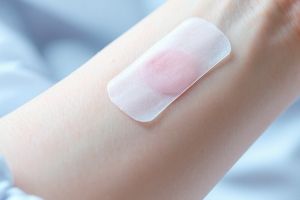tissue regeneration

Stability, challenges, and prospects of chitosan for the delivery of anticancer drugs and tissue regenerative growth factors
The review article presents various chitosan-based platforms for drug delivery. In particular, systems for cancer treatment and for the delivery of growth factors that promote tissue regeneration.

Application of chitosan in electrophoretic deposition
Electrophoretic deposition is getting more attention in recent years. It is cost-effective and can be applied in many ways to produce a variety of composites. In the following, we present an article highlighting the influence of initial concentrations and process parameters on the deposition of chitosan-hydroxyapatite structures. Furthermore, the bonds and interactions in the deposited structures were also investigated.

Chitosan and stem cells for wound healing
Stem cell therapy has received a lot of attention in recent years and has created new ways of treating the various conditions and ailments. The stem cells can differentiate into a wide variety of cell types and can positively influence inflammatory reactions. Clinical applications of stem cells are still limited, among others due to the high concentrations of ROS (reactive oxygen species) in the environment of the inflammation which limits retention of the transplanted stem cells.

Publications in February 2017 - Chitosan based implants
343 articles about chitosan were published in February 2017. Main topics address chitosan in connection to nanoparticles, tissues and in evaluation studies. Top countries in chitosan research were China (57), India (29) and USA (21).

Publications in May 2015
166 articles about chitosan were published in May 2015. In the rank of nations scientists from China gained with 39 publications the leading position, followed by India (16), the US (12) and Italy (11). The research priorities focused on nanoparticles, evaluation studies and pharmaceutical preparations.





